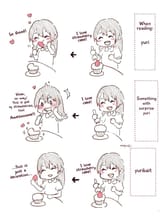>>279846889 (OP)
The persistence of what's labeled "yuri bait" largely stems from a modern audience's tendency to interpret intense platonic female affection through a romantic lens. Historically, and in many cultures, close female friendships, often expressed with significant physical and emotional intimacy, were not automatically coded as romantic or sexual.
Authors, particularly in East Asian media, might genuinely aim to depict deep, supportive, and affectionate female bonds, a "sisterhood" that transcends mere acquaintance. This can include intertwined lives, shared beds, comforting physical contact, and highly emotional declarations of love and loyalty. These are hallmarks of strong platonic relationships.
However, in a media landscape scant with lesbian romance, fandoms actively seek out the material even where it doesn't exist, and these sincere portrayals of platonic intimacy can be easily misinterpreted. What an author intends as a powerful bond of friendship, devoid of romantic undertones, is perceived by some viewers as an intentional tease or a missed opportunity for actual yuri. The "bait" isn't a malicious deception, but rather a clash between the creator's traditional portrayal of close female bonds and a contemporary audience's romanticized interpretation of such intimacy.
Some of this misunderstanding stems from distinctions in differences between male and female friendships. Women more frequently engage in friendly behaviors with each other that would be deemed inappropriate between male friends.














